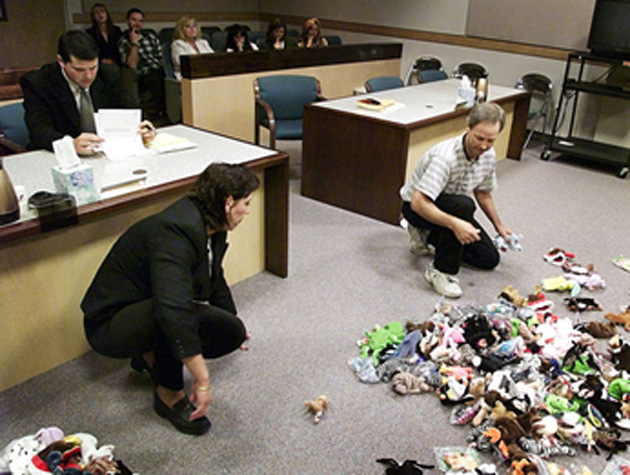How To Identify Bubbles
The first bubble I ever saw was the dot-com bubble of 1999. I was born in the early seventies, and I made it to my mid-twenties before ever hearing about an asset price bubble. Commercial real estate went nuts in the eighties, but nobody ever called it a bubble. They didn’t even call it a crash when it crashed.
Bubbles aren’t new—they’ve been around since Dutch tulips—but it’s only recently that they’ve worked their way into the average investor’s lexicon. If you asked the man on the street, he would probably tell you there are five different bubbles going on right now. There is some truth to that, but also some untruth to that.
The true part is that a lot of things are currently overvalued. I would say stocks are overvalued. Most people would agree. I would also say bonds are overvalued. Some people would agree. I would say corporate credit is overvalued, real estate in certain parts of the country is overvalued, and maybe a few other things.
But these are not bubbles.
So, what is the difference between something being overvalued and something being in a bubble?
Since you asked…
A bubble is a psychological phenomenon that occurs when an asset class becomes overvalued and is accompanied by an obsession or preoccupation with that asset class. For example, you probably heard that the Dow just hit 20,000. It is not a bubble. Nobody is obsessed or preoccupied with the stock market. You don’t have Coast Guard guys day-trading it like when I was still in the service in 1999. That was a bubble. In fact, nobody really gives a crap about today’s stock market. Usually, they have CNBC on in the locker room at my gym. Nobody pays any attention to it.
By that standard, there are very few bubbles in the world right now. But there is a bull market in people running around calling everything a bubble. Please ignore those people. The only real, honest-to-goodness asset price bubbles out there are in residential real estate in Canada, Australia, and Sweden. They are going to end up in the landfill in New Mexico with all the Atari E.T. cartridges.
The Video Game Crash of 1983
If you didn’t get that reference, you can do some background research here and here, but suffice it to say that there was a bubble in video games in the early eighties. It did not end well.

Source: nerdoverload.com
People (including me) were pretty bulled up on Atari 2600 video games back in the day. This led to Atari getting a little out over its skis, producing way too many games and ending up with a boatload of excess inventory. The situation was so embarrassing to the company that they dumped them all in a landfill in New Mexico in the middle of the night. The games were excavated (by archaeologists!) over 30 years later for a documentary.
Concurrent with the dot-com bubble was the Beanie Baby bubble, which probably got less press than it should have because people were preoccupied with stocks at the time.
I included this photograph in a recent issue of The Daily Dirtnap—a divorcing couple dividing up their Beanie Babies in court.

Source: Huffington Post
Now that’s a bubble.
If You Think Everything’s a Bubble, You Miss out on Bull Markets
One of the consequences of the financial crisis is that any time the price of anything goes up, anywhere, we think it is a bubble. We have been psychologically scarred. We will always confuse legitimate bull markets with bubbles.
I noticed myself doing this recently. I observed that prices of houses in my neighborhood are at last going up, and my first thought was—I should sell! It’s a bubble!
Actually, it probably isn’t a bubble. It’s probably a healthy bull market, and you could make the case that houses in my neighborhood had been chronically undervalued. But I was so traumatized by the crisis, that for the rest of my life, bull markets will make me nervous.
That’s too bad because the best way to play a bull market is to be long and strong and just not worry about it. The worst way to play a bull market is to sell the first uptick.
I’m being serious. If you’re not a “professional” investor, the worst thing you can do is to be trigger happy. Especially with retirement accounts. Retirement accounts are for retirement, so whether something is in a bubble or not is generally of no consequence. Timing the cycles is really, really hard.
Generally, this is what happens when people try to time the cycles—they sell out of asset class X and then watch helplessly as it goes up for three more years. That’s the thing about bubbles. Just when you think they are stupid, they can get a lot stupider. That’s been my experience with Canada, as house prices went from stupid in 2013 to very stupid in 2015 to OMG so stupid in 2017. It’s my job to figure out how to time the cycles, but even with all this experience, it doesn’t seem like I’m getting any better at it.
If I wanted you to take away one thing from this piece, it is this—if you hear someone on TV squawking about how XYZ is in a bubble, try to evaluate it a little more critically. Here’s a heuristic—if someone calls something a bubble, just set your phone to go off three years from now. Then it will be in a bubble. And you will know because your uncle and your dentist and your old high school buddies will all be involved.
Disclaimer: The Mauldin Economics website, Yield Shark, Thoughts from the Frontline, Patrick Cox’s Tech Digest, Outside the Box, Over My Shoulder, World Money Analyst, Street Freak, Just ...
more


